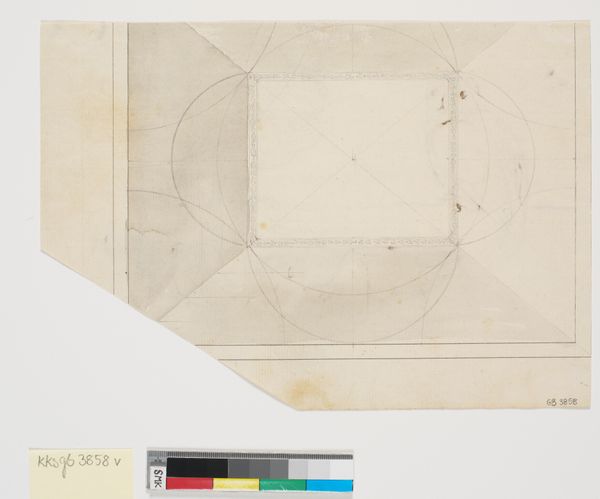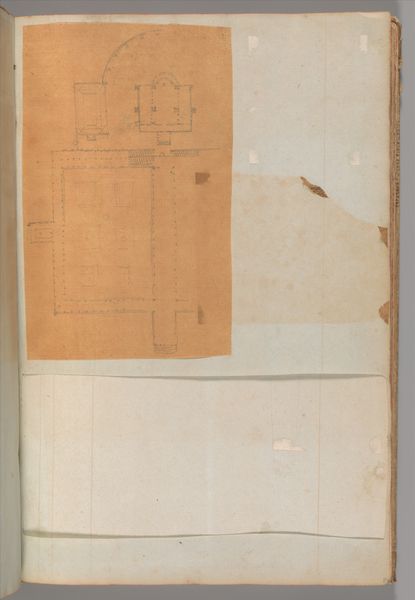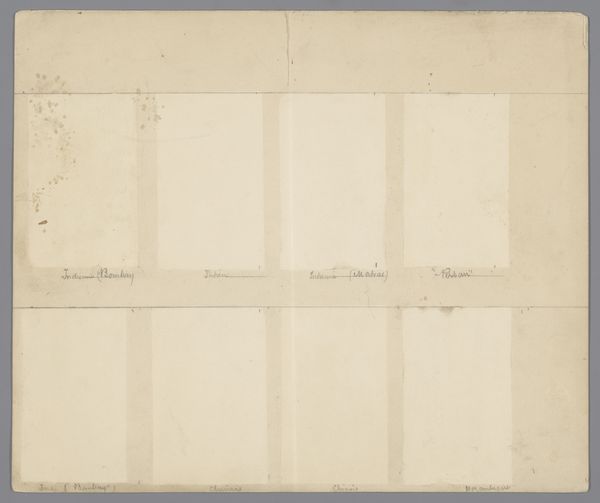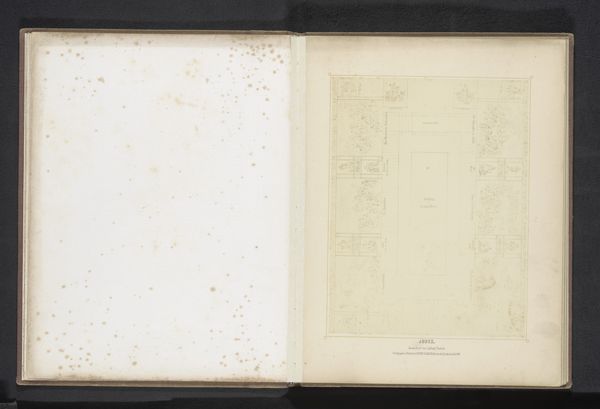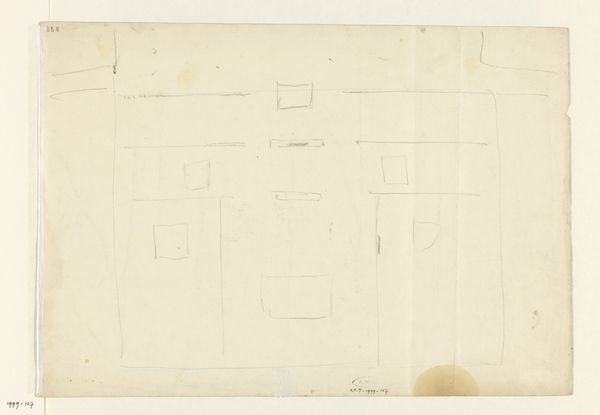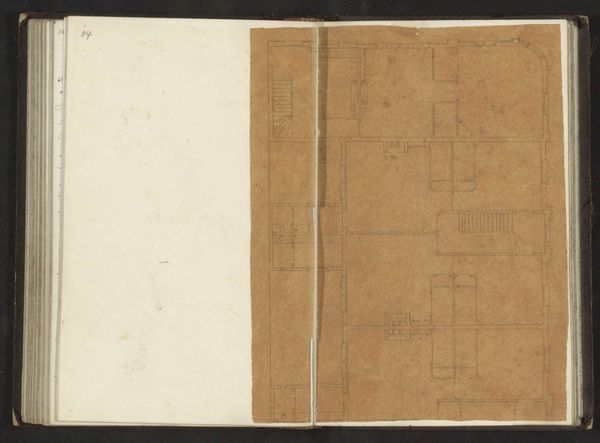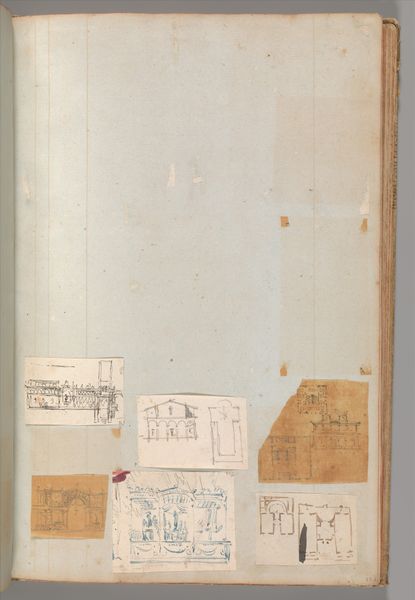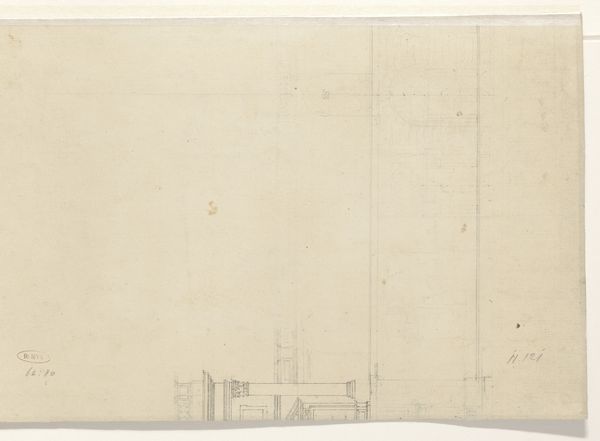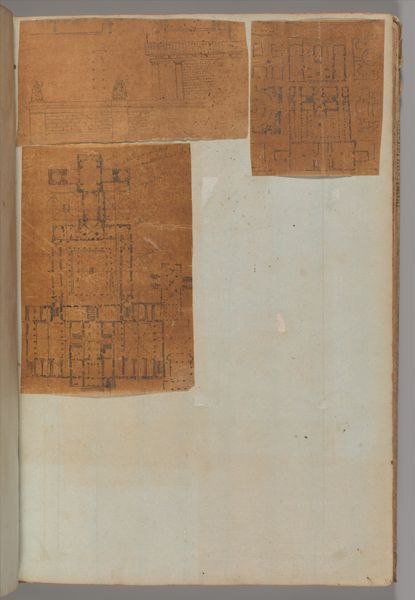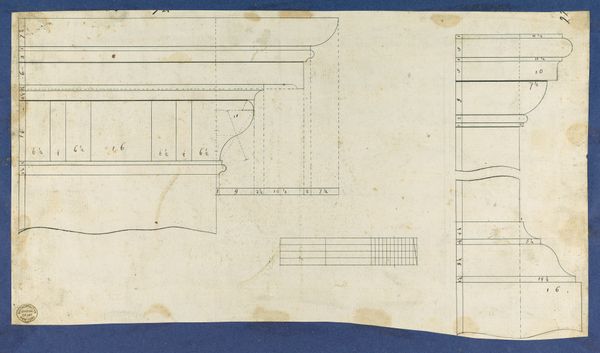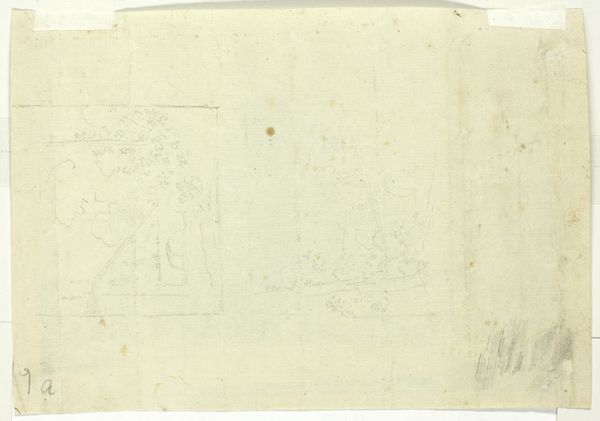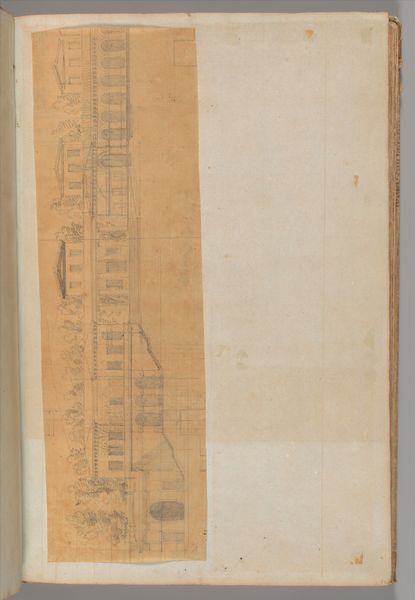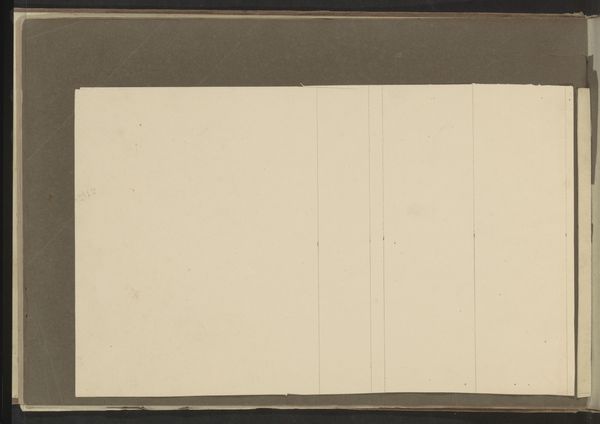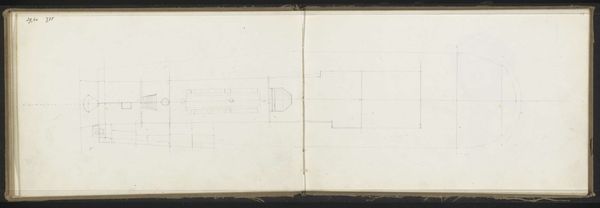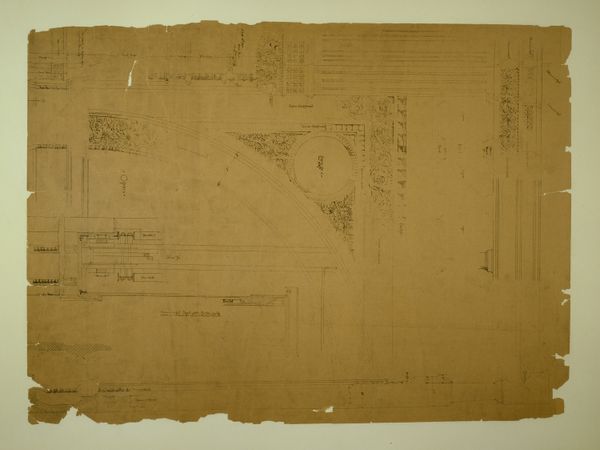
Snit og opstalt af et drivhus, formodentlig til Spurveskjul 1743 - 1809
0:00
0:00
drawing
#
drawing
#
yellowing
#
magazine cover layout
#
bold yellow colours
#
aged paper
#
pastel soft colours
#
yellowing background
#
yellow element
#
soft and bright colour
#
yellow accent
#
yellow
Dimensions: 210 mm (height) x 492 mm (width) (bladmaal)
Curator: This delicate drawing, "Snit og opstalt af et drivhus, formodentlig til Spurveskjul," or Section and elevation of a greenhouse, probably for Spurveskjul, is attributed to Nicolai Abildgaard, dating from around 1743 to 1809. It resides here at the SMK. What strikes you most about it? Editor: Immediately, the almost ghostly gridwork jumps out. The aged paper contributes to an ethereal quality, a design faded but meticulously rendered. It feels like peering into a forgotten aspiration, a plan slowly dissolving into memory. Curator: Indeed. Architectural drawings such as this offer a fascinating insight into the mindset of the Enlightenment. The greenhouse, far from simply being a practical structure, was a powerful symbol of human control over nature, a sort of ordered paradise. Editor: And that's visually communicated so effectively through the geometry, wouldn’t you agree? The perfect horizontals and verticals suggest a radical imposition of order onto what is inherently organic and free-flowing, or strives to be. A human structure attempting to imitate nature's architectural processes but ultimately adhering to different geometric constraints. Curator: Precisely! Consider, also, Spurveskjul. The name implies refuge, and one must ask what's it meant to be refuge from? Perhaps, refuge from the chaos of life, sought within an enclosed, cultivated microcosm. Greenhouses functioned as an expression of knowledge of botany at the time and were status symbols; perhaps there is refuge in intellectual refinement as well. Editor: It’s quite intriguing how that idea of ‘refuge’ clashes against what one knows about the nature of a greenhouse, too; these are ultimately buildings built to propagate and showcase living things, or ideas that bloom, so the sense of intellectual protection seems, dare I say it, oxymoronic. Curator: It's the paradox that holds our attention, I believe. The very act of planning and designing suggests an impulse to control. It mirrors an underlying belief in human capacity to dominate the natural world that, although seemingly archaic, endures in a less overtly symbolic manner. Editor: Absolutely. It's a beautiful testament to how artistic rendering provides keys that unlock understanding, which otherwise stays unaddressed. It helps us explore a set of underlying assumptions and feelings that remain consistent through time.
Comments
No comments
Be the first to comment and join the conversation on the ultimate creative platform.
